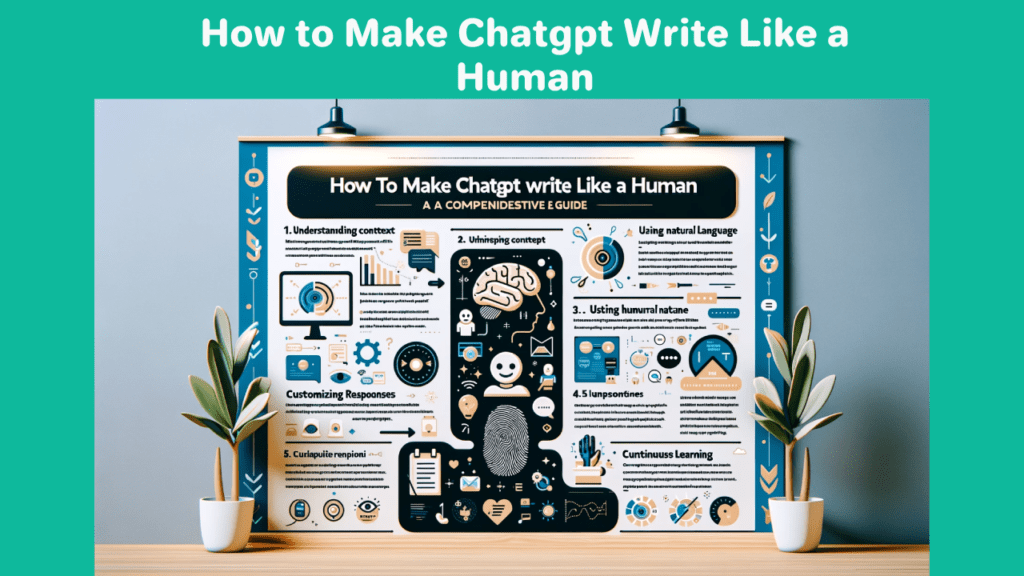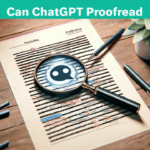Quick Overview
In the realm of artificial intelligence, the quest to make ChatGPT’s outputs resemble human writing involves a meticulous process of adjustment and refinement. This journey into fine-tuning ChatGPT’s capabilities aims at achieving a high degree of personalization, emotional depth, and the inclusion of conversational nuances, making the interactions not just informative but also engaging and relatable.
By focusing on these aspects, we endeavor to bridge the gap between machine-generated text and the rich, varied tapestry of human communication.
Key Takeaways
- Personalization: Adapt ChatGPT’s responses to meet the unique preferences and needs of different audiences, ensuring that the content resonates on a personal level.
- Emotional Depth: Infuse ChatGPT’s outputs with a range of emotions, leveraging emotionally charged language and varied sentence structures to create a more dynamic and engaging reading experience.
- Conversational Nuances: Incorporate idiomatic expressions and adjust the tone to reflect the informal, conversational aspects of human speech, enhancing the relatability and authenticity of the interaction.
Understanding Human-Like Writing
Characteristics of Human Writing
Human writing is a complex blend of logic, emotion, and creativity, distinguished by several key features:
- Emotional Depth: This involves more than just stating facts; it’s about weaving empathy, passion, and sensitivity into the narrative, enabling readers to connect on an emotional level.
- Varied Sentence Structure: The rhythm of human writing often fluctuates, combining short, punchy sentences with longer, more descriptive ones to maintain reader interest and reflect the natural ebb and flow of thought.
- Idiomatic Expressions: The use of colloquialisms or idioms adds color and authenticity, grounding the text in a specific cultural or linguistic context.
- Contextual Relevance: Writing that considers the reader’s circumstances, challenges, and goals can offer tailored insights, making the content significantly more impactful.
- Personal Touch: Stories, anecdotes, and personal reflections add depth and authenticity, allowing the writer to form a more meaningful connection with the reader.
Read Also: 75+ Best ChatGPT Prompts For Affiliate Marketing
ChatGPT’s Capabilities and Limitations
ChatGPT, with its vast reservoir of language patterns and structures, is adept at generating text that is coherent and contextually aware. However, the subtleties of human emotion and the richness of personal experiences are not easily replicated by AI. Therefore, prompting ChatGPT with precision and clarity is vital to elicit responses that come closer to these human elements.
Enhancing Human-Likeness in ChatGPT Responses
Personalization
- Audience Understanding: Customizing the tone and style of ChatGPT’s responses to align with the audience’s expectations can transform generic answers into engaging, audience-specific content.
- Specificity in Prompts: By specifying the emotional tone, desired phrases, or context, you can guide ChatGPT to produce responses that are finely attuned to the task at hand.
Emotional Depth and Varied Structures
- Emotionally Charged Language: Directing ChatGPT to use language that evokes specific emotions can make the text resonate more deeply with readers.
- Sentence Variety: Encouraging a mix of sentence lengths and structures helps mimic the natural variability of human speech, making the text more dynamic and engaging.
Conversational Nuances
- Use of Idioms and Colloquialisms: Integrating slang or idiomatic expressions can make ChatGPT’s outputs feel more natural and less formal, fostering a connection with the reader.
- Question and Answer Format: Presenting information in a Q&A format can simulate the back-and-forth of a real conversation, making the interaction feel more personalized and engaging.
Incorporating Feedback and Iteration
- Feedback Loop: The process of refining ChatGPT’s responses based on feedback is crucial. Highlighting elements that feel less human-like and adjusting prompts accordingly can significantly enhance the quality and authenticity of the output.
By adhering to these guidelines, we can steer ChatGPT towards producing text that not only informs but also connects and engages on a human level, enriching the interaction between machine intelligence and human curiosity.
FAQs:
Can ChatGPT mimic specific writing styles?
How do I make ChatGPT understand the emotional tone I want?
Is it possible to make ChatGPT sound exactly like a particular human writer?
Conclusion:
Making ChatGPT write like a human involves personalizing responses, incorporating emotional depth, utilizing varied sentence structures, and embedding conversational nuances. By carefully crafting prompts and using feedback to refine outputs, ChatGPT can produce text that closely resembles human writing, offering engaging and relatable content tailored to specific audiences and contexts.



